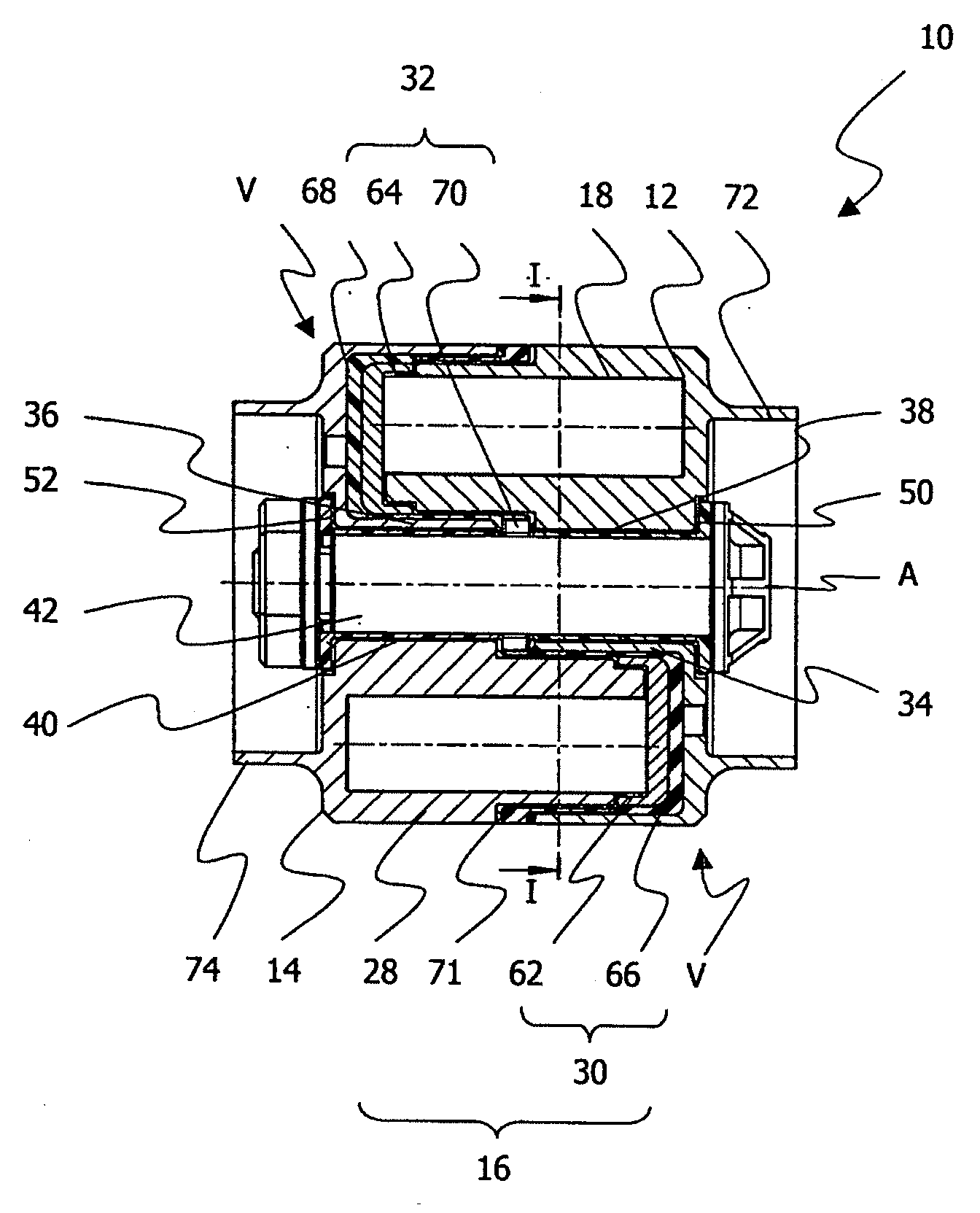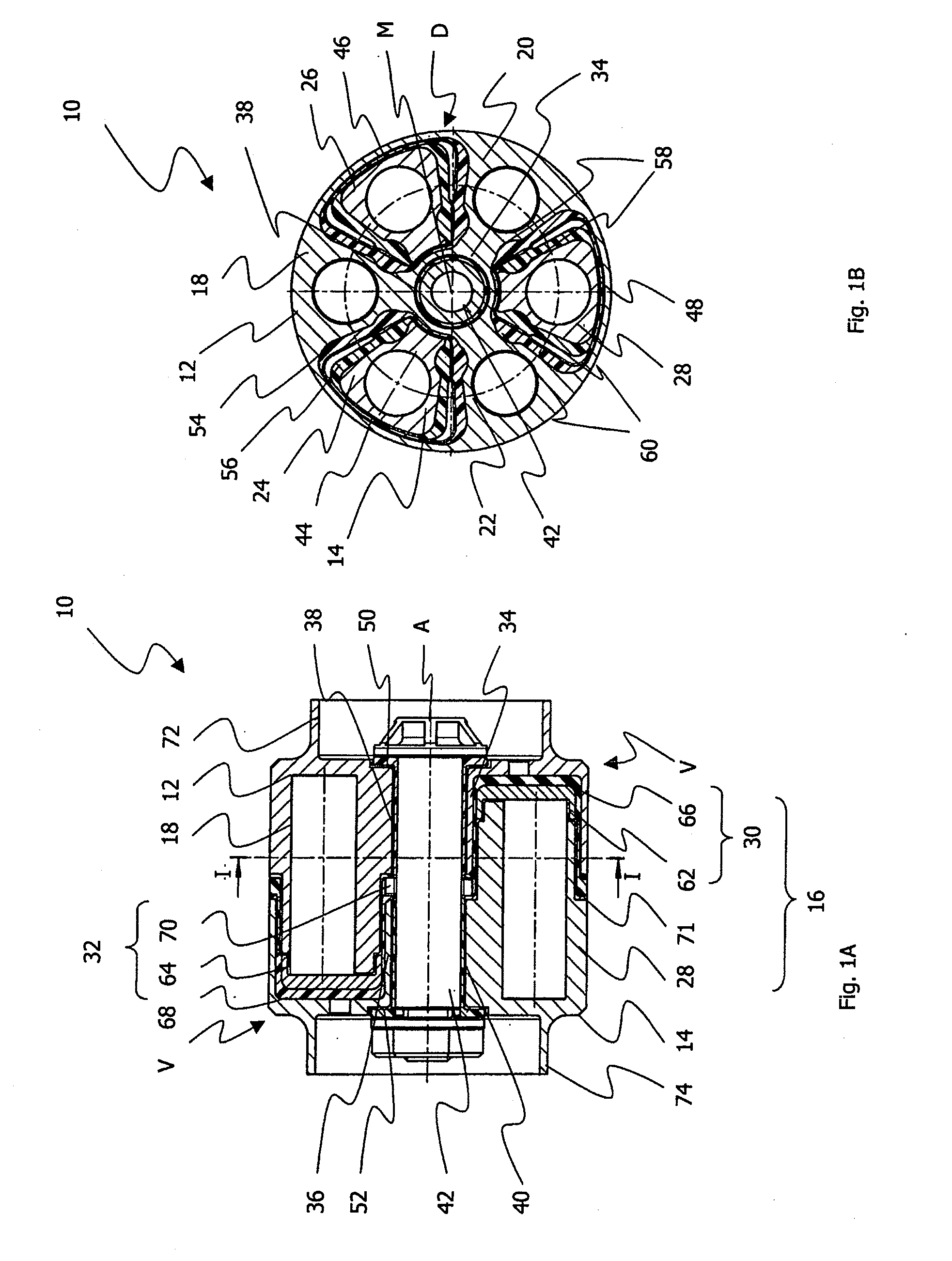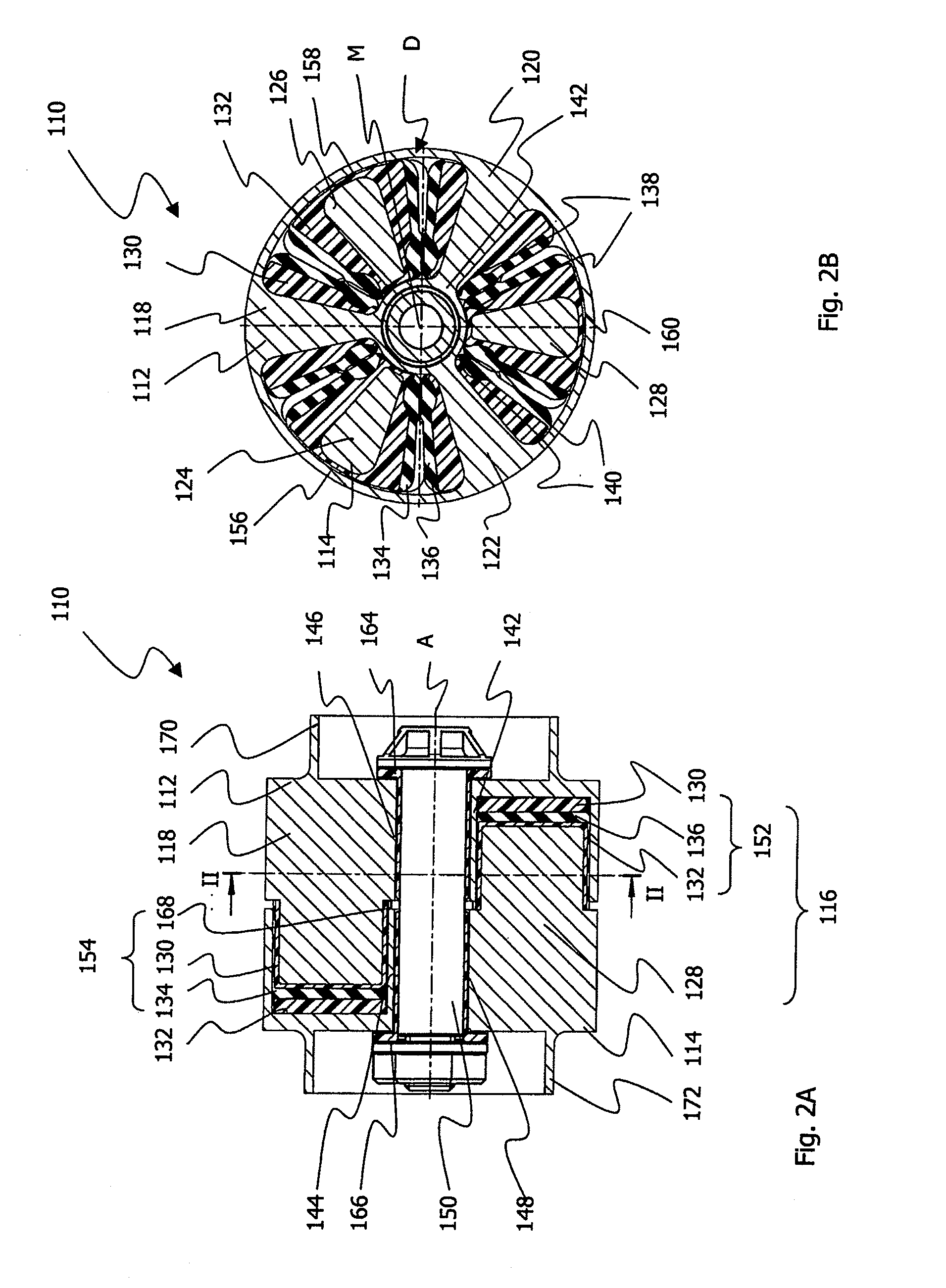Device for the vibration-reducing transmission of torques
- Summary
- Abstract
- Description
- Claims
- Application Information
AI Technical Summary
Benefits of technology
Problems solved by technology
Method used
Image
Examples
fourth embodiment
A fourth embodiment is described below with reference to FIGS. 4 and 5.
FIG. 4 shows a perspective view of the torque transmission device 310 according to a fourth embodiment of the invention. From FIG. 4 the two transmission parts 312 and 314 and also a section of an intermediate element 376 arranged between these transmission parts 312, 314 can be seen. FIG. 4 further shows the two tubular sections 372 and 374 on the transmission parts 312, 314, by which the transmission parts 312, 314 can be attached to shaft sections (not shown).
FIG. 5 shows a perspective view of the intermediate element 376 with the claw formations 318, 320 and 324, 326 and 328 protruding from a disc-shaped base element 376a.
In addition, it is shown by way of indication in FIG. 5 that the claw formations 318, 320 and 324, 326, 328 are each covered with a rubber coating 354 and 356. In the base element 376a there can be seen between the claws 324 and 328 a through-bore 378 which is provided, for example, in orde...
PUM
 Login to View More
Login to View More Abstract
Description
Claims
Application Information
 Login to View More
Login to View More - R&D
- Intellectual Property
- Life Sciences
- Materials
- Tech Scout
- Unparalleled Data Quality
- Higher Quality Content
- 60% Fewer Hallucinations
Browse by: Latest US Patents, China's latest patents, Technical Efficacy Thesaurus, Application Domain, Technology Topic, Popular Technical Reports.
© 2025 PatSnap. All rights reserved.Legal|Privacy policy|Modern Slavery Act Transparency Statement|Sitemap|About US| Contact US: help@patsnap.com



